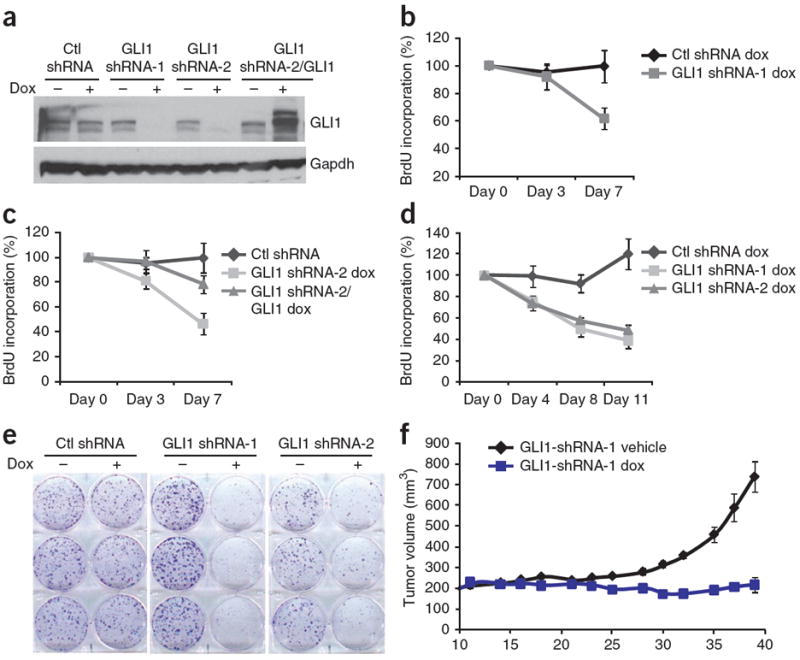Figure 4.

Inhibition of GLI1 impairs proliferation of MRT cells. (a) Immunoblot showing reduction of GLI1 protein in G401 cells upon induction with doxycycline (dox) of GLI1 shRNAs or of a nontargeting control (Ctl) shRNA. GLI1 is overexpressed upon doxycycline treatment in cells carrying both the inducible GLI1 shRNA and inducible GLI1 vectors; Gapdh is included as a loading control. (b) BrdU assay showing cell proliferation over a time course of doxycycline induction of GLI1 shRNA-1 or Ctl shRNAs in G401 cells. (c) BrdU time-course assay in G401 cells showing cell proliferation following doxycycline-induced expression of a control (Ctl) shRNA, GLI1 shRNA-2 or GLI1shRNA-2 accompanied by expression of a doxycycline-inducible GLI1 construct not containing the shRNA recognition sequence. (d) BrdU assay in A204 cells showing cell proliferation following doxycycline induction of Ctl, GLI1 shRNA-1 and GLI1shRNA-2. All assays were performed in triplicate, and BrdU incorporation in doxycycline-treated cells is represented as percentage of BrdU label compared to uninduced cells. Values are shown as mean ± s.d. (e) Colony formation in A204 cells in the absence and presence of doxycycline induction of Ctl shRNA, GLI1 shRNA-1 and GLI1 shRNA-2. A representative experiment of at least three independent experiments performed in triplicate is shown. (f) Tumor volumes over a time course of vehicle- and doxycycline-treated animals bearing G401 MRT cells containing inducible GLI1 shRNA-1. Tumor volume is reported as mean ± s.e.m.; n = 8 per treatment group.
